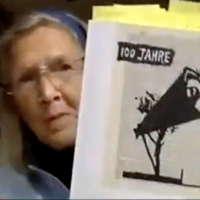 VIDEO PODCAST: Discussion about Bernard Haitink (1929-2021), Salzburg, Roger Doyle's Finnegans Wake Project, the English Symphony Orchestra, the Chopin Competition Warsaw, Los Angeles Opera and other subjects.
VIDEO PODCAST: Discussion about Bernard Haitink (1929-2021), Salzburg, Roger Doyle's Finnegans Wake Project, the English Symphony Orchestra, the Chopin Competition Warsaw, Los Angeles Opera and other subjects.
 VIDEO PODCAST: Women Composers - Our special hour-long illustrated feature on women composers includes contributions from Diana Ambache, Gail Wein, Hilary Tann, Natalie Artemas-Polak and Victoria Bond.
VIDEO PODCAST: Women Composers - Our special hour-long illustrated feature on women composers includes contributions from Diana Ambache, Gail Wein, Hilary Tann, Natalie Artemas-Polak and Victoria Bond.
The Orchestra is the Winner
GIUSEPPE PENNISI reviews 'La bohème' in Rome
La bohème by Giacomo Puccini is one of the world's most performed operas. It is one of the most loved too: not only in Europe - I remember magnificent editions both in Paris and Budapest - but all over. In Puccini's musical theatre, La bohème is a unique opera, with an unmistakable colour. Eclectic, such as to admirably blend melodrama, German romanticism, the French opéra lyrique and the romance-songs: it is the most shining Italian example of literaturoper. Also for this reason, Puccini seems more mindful of Bizet, Massenet and Gounod than of the Italian tradition.
A new production was presented by Teatro dell'Opera di Roma on 30 July 2021 at the conclusion of the summer season at the Circus Maximus. It is on until 5 August. I was there on the opening night. It is a production that deserves to be seen and heard but that does not have the level of excellence of that presented in June 2018 at the Teatro Costanzi, the main headquarters of the Rome Opera House. One of the reasons is, in my opinion, the attempt by Davide Livermore (direction, sets, costumes, lighting) to create a show designed for a large outdoor stage, using projections of the visual French art of the late nineteenth century. La bohème is an intimate work that can be presented in an open-air theatre but with the syntax and lexicon of an indoor theatre. I remember, at the beginning of the seventies of last century, a wonderful Bohème (Renata Scotto and Franco Corelli were the protagonists) brought from the Metropolitan in New York to the Wolf Trap Center near Washington. The stage was very large and the audience, in addition to the stalls and boxes, was on the lawn where the picnic was authorized. A simplified version of the production designed by Franco Zeffirelli for La Scala in 1963 was used. It worked perfectly.
La bohème is always contemporary. It was at the time of Henry Murger who had set it in 'his' Paris of 'his' time (1840-50). When it was composed by Giacomo Puccini, its postcard Paris is, in fact, the Milan of the Scapigliatura years - the last decade of the nineteenth century. In the last chapter of Murger's Scenes de la Vie de Bohème - the novel that inspired both Leoncavallo and Puccini - a year has passed since Mimì's death. Both the poet Rodolfo and the painter Marcello (as well as the musician Colline and the philosopher Schaunard) made their fortune in their respective professions. They have also become bourgeois. Marcello has just spent a night with Musette – but it was 'a sad night, it was never what it was - not at all!'. 'Youth – the painter concludes with a touch of bitterness – has only one season.' The hard core of the work is not the imaginary Paris of 1840-50 but the last phase of youth, that of carefreeness brought to an abrupt end by the death of Mimì. Contemporary theme as ever, especially today in a Europe with high 'intellectual' unemployment and NEET (young people not employed or even in education or training), as can be a poet with journalistic ambitions, a painter, a graduate in philosophy and a novice musician. In 2018, Alex Ollé of Fura dels Baus (and his colleagues Alfons Flores and Lluc Castells, sets and lighting) caught the right touch by setting the parable of the end of youth in a suburban Roman neighbourhood.
We come to the strong points of this Bohème at the Circus Maximus. In my opinion, there are three: the orchestra, the male protagonist and the choir.
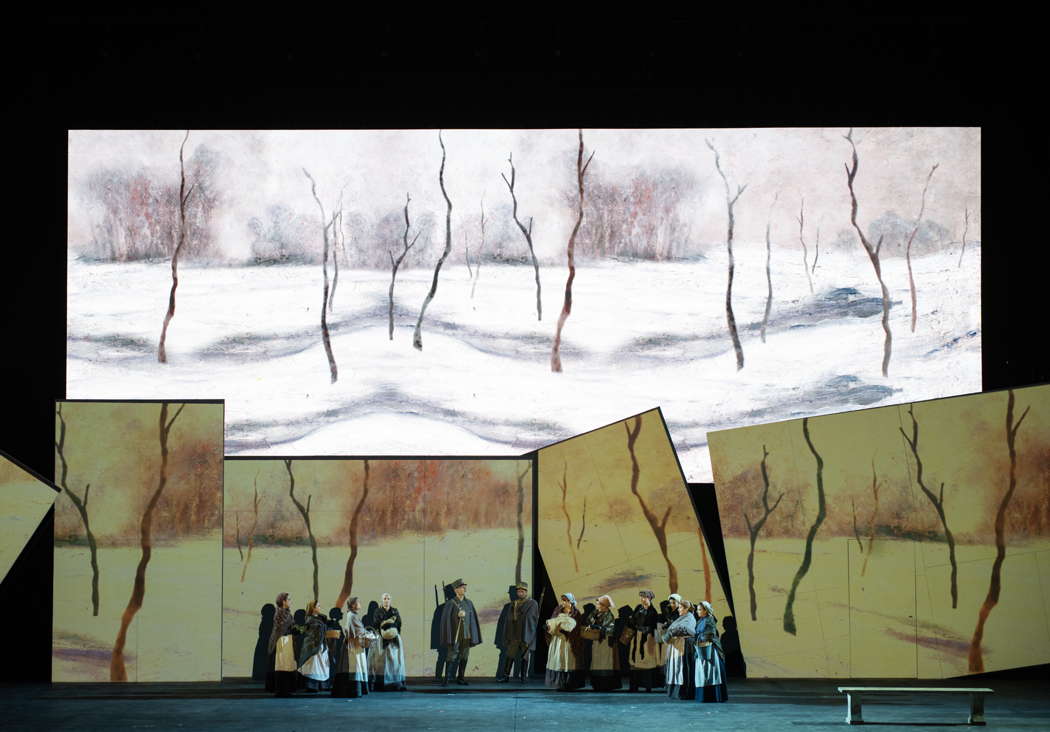
A scene from La bohème in Rome. Photo © 2021 Fabrizio Sansoni
The conducting is entrusted to the young Spaniard Jordi Bernàcer, already heard in Rome in Tosca and Aida. Bernàcer has not forgotten that La bohème is an opera in which the orchestra is the protagonist. The score intertwines about fifteen thematic motifs as well as introducing dissonances similar to those that ten years later would have made the success of Richard Strauss. In this manner, the atmosphere is created to palpate youth as the only season that does not return as well as to go from the light moments (almost dreamers) of the first Act via the pressing rhythm of Act II and the inconsolable melancholy of Act III to the tragic achievement of adulthood in Act IV. Thanks to the excellent orchestra of the Teatro dell'Opera di Roma, Bernàcer has highlighted this refined orchestration, which precedes the great writing especially of Central Europe and the Austro-German world. I could feel it even at an open air production, inevitably disturbed by background noise.
I had listened to Piero Pretti in Donizettian and Verdian roles (as Trovatore in Ravenna). This is the first time that I've heard him in a difficult Puccini role, a part that insists on the centre register, but also requires a transparent ringing and the use of the 'half voice'. He was very good also giving some beautiful legato and a careful generous use of the 'Cs'.
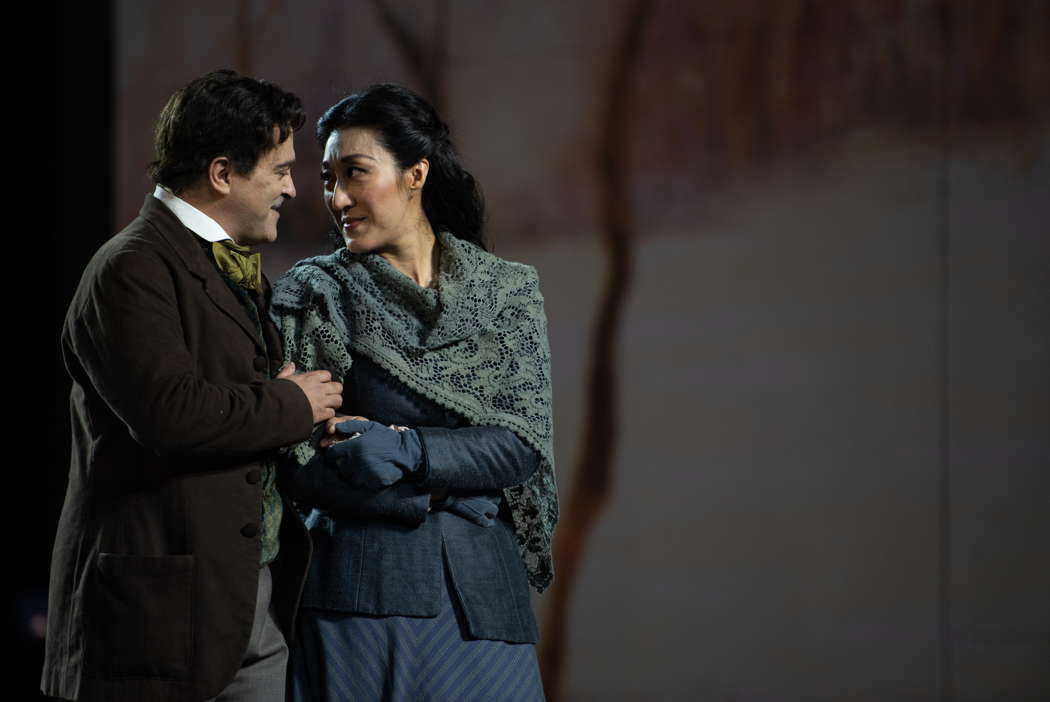
Piero Pretti as Rodolfo and Vittoria Yeo as Mimì in La bohème in Rome. Photo © 2021 Fabrizio Sansoni
The chorus has two key moments in Bohème: much of the second act and the beginning of Act III. It is necessary to congratulate Roberto Gabbiani who prepared the chorus for how he dealt with the requests by the director in the crowded (and a little confused) second act.
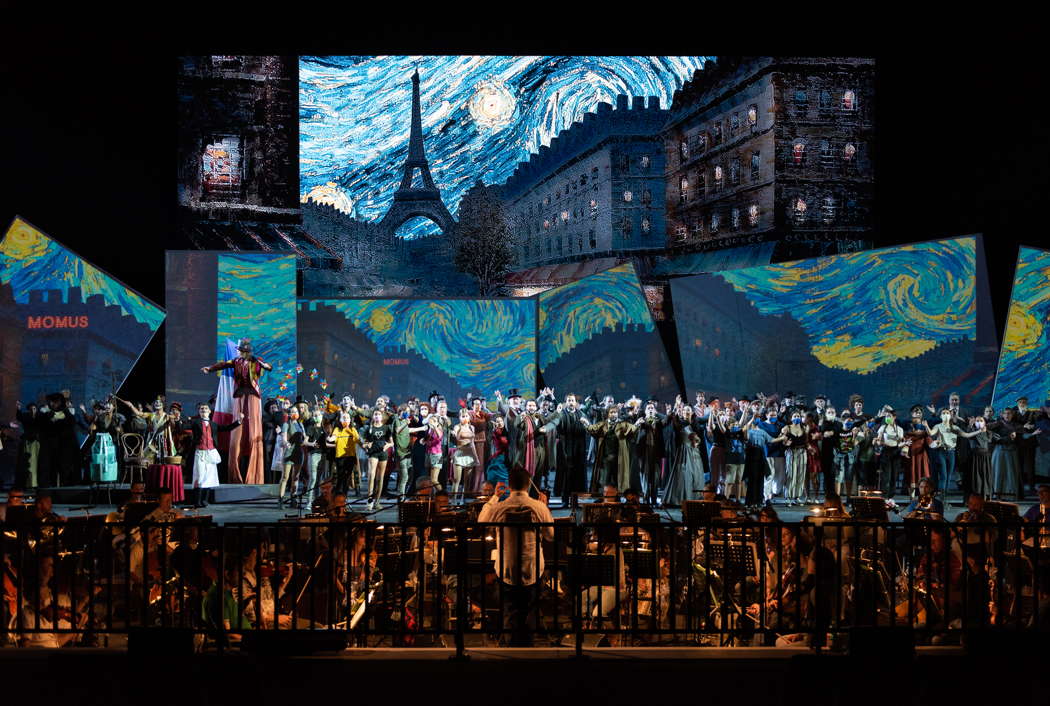
A scene from La bohème in Rome. Photo © 2021 Fabrizio Sansoni
Mimì was Vittoria Yeo, sometimes excessive in volume; I must admit that every time I listen to this work I have the memory of Mirella Freni and Renata Scotto; thus, I may not be fair. Sara Bianchi was good as Musetta.
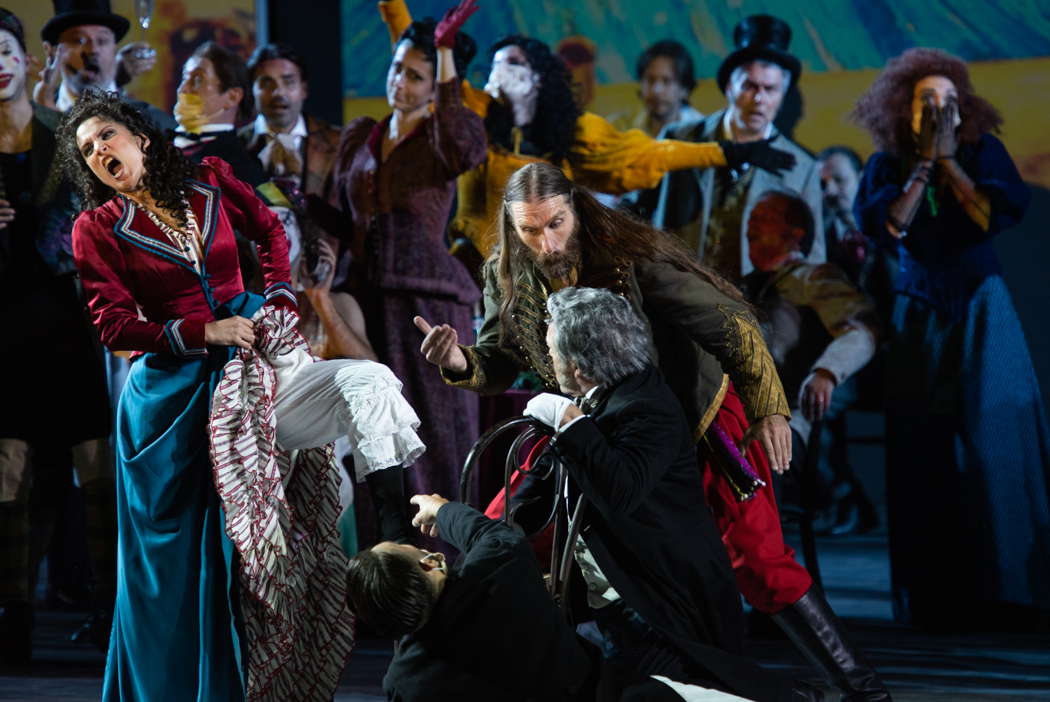
Sara Bianchi as Musetta and Domenico Colaianni as Alcindoro in La bohème in Rome. Photo © 2021 Fabrizio Sansoni
Marcello was an articulated Luca Micheletti, and Colline and Schaunard were sung by Gabriele Savona and Simone Del Savio respectively. Domenico Colaianni played the two short roles of Benoit and Alcindoro.
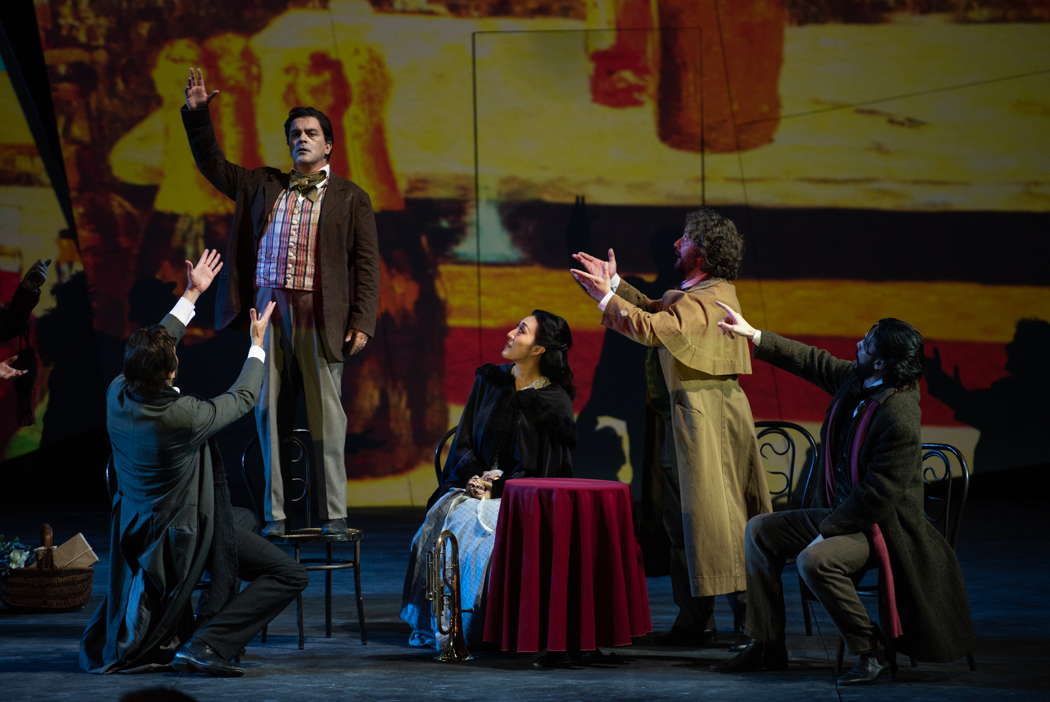
From left to right: Gabriele Savona as Colline, Piero Pretti as Rodolfo, Vittoria Yeo as Mimì, Simone Del Savio as Schaunard and Luca Micheletti as Marcello in La bohème in Rome. Photo © 2021 Fabrizio Sansoni
The performance was sold out. There was applause for everyone, and accolades for Pretti and the orchestra.
Copyright © 2 August 2021
Giuseppe Pennisi,
Rome, Italy



